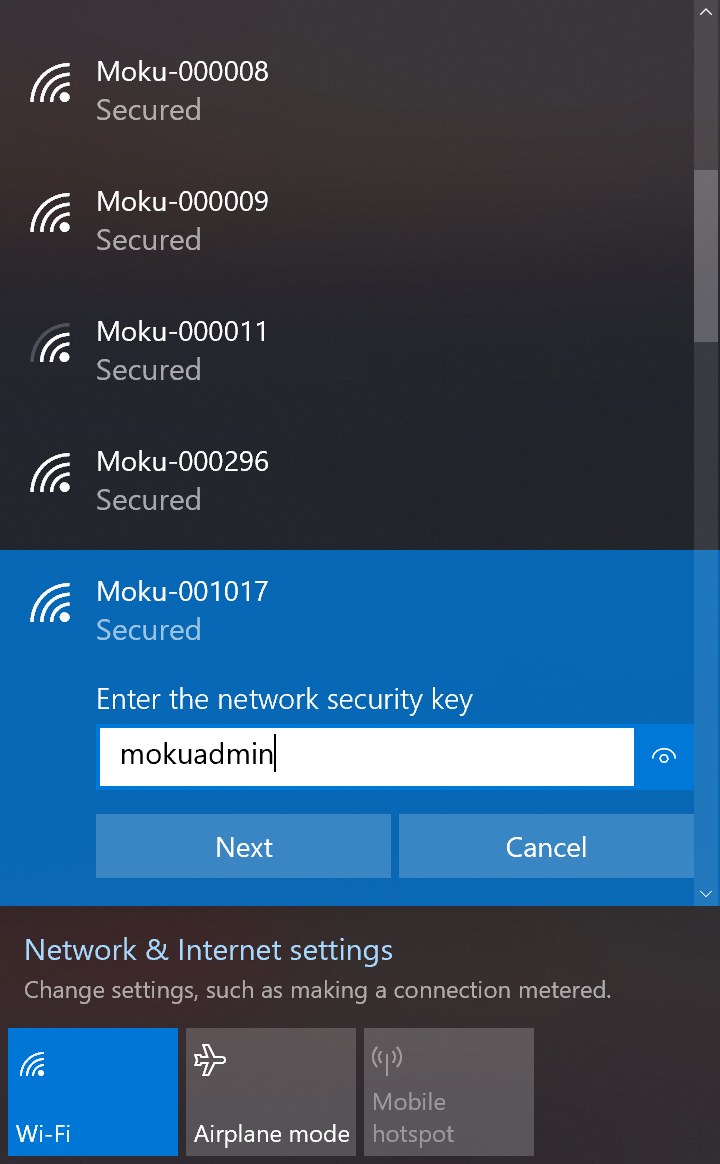How to connect to the access point of a Moku device?
Connecting to your Moku's WiFi access point
Each Moku is equipped with an onboard WiFi access point, which is useful for initial device setup and instrument control without the need for ethernet or any other WiFi network.
Your Moku will have the access point turned on by default. However, if you have turned off the access point, please refer to this article to see how to turn the access point back on
iPad App Connection
- Turn on your Moku and wait until the LED at the front of the device indicates it is powered on. The LED colors are explained here: Moku LEDs
- Open Settings for your iPad then select Wi-Fi.
- A network with the name "Moku-XXXXXX" should appear, where XXXXXX is the serial number of the Moku. Select this network.
- You will be prompted to enter the password. The default password is for Moku:Lab is mokuadmin. The default password for Moku:Go and Moku:Pro is printed on a label on the bottom of the Moku

- Confirm the password and join the network.
- Once you are successfully connected to the access point, launch the Moku App. You should only see one Moku in the "Select your device" menu

You have now successfully connected to the access point of your Moku and can control and configure the device from the iPad App.
Windows and macOS
You can also control and configure your Moku via WiFi and PC using the Windows app, macOS app, or various APIs (Python, MATLAB, LabVIEW). To connect a computer to your Moku's WiFi access point:
- Turn on your Moku, wait until the LED at the front of the device indicates it is powered on. The LED colors are explained here: Moku LEDs
- Open the WiFi network settings in your computer.
- A network with the name "Moku-XXXXXX" should appear, where XXXXXX is the serial number of the Moku. Select this network.
- You will be prompted to enter the password (see below for Windows PC example). The default password for Moku:Lab is mokuadmin. The default password for Moku:Go and Moku:Pro is printed on the label at the bottom of the device.

- Once the connection is established you can control and configure your Moku using the Windows app, macOS app or our APIs.
If you are communicating with the Moku using our APIs you will need to determine the IP address of the Moku:Lab, refer to this Knowledge Base article to determine the IP address of your Moku.